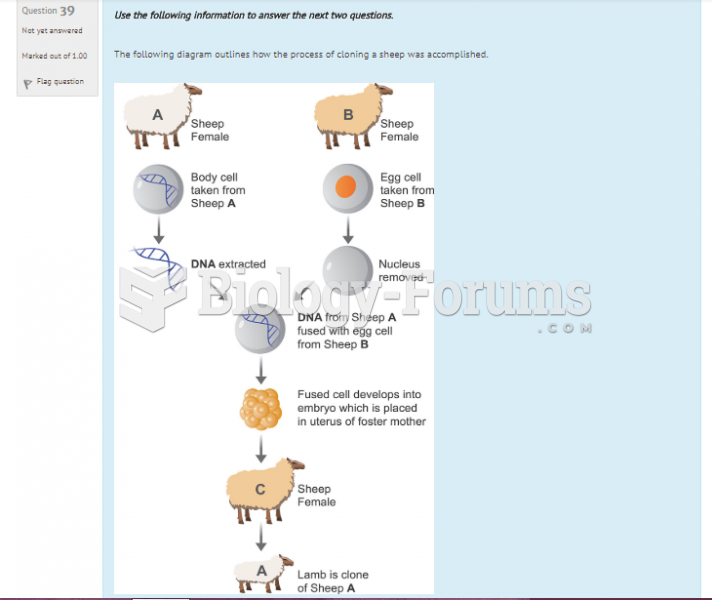|
|
|
This year, an estimated 1.4 million Americans will have a new or recurrent heart attack.
Most fungi that pathogenically affect humans live in soil. If a person is not healthy, has an open wound, or is immunocompromised, a fungal infection can be very aggressive.
An identified risk factor for osteoporosis is the intake of excessive amounts of vitamin A. Dietary intake of approximately double the recommended daily amount of vitamin A, by women, has been shown to reduce bone mineral density and increase the chances for hip fractures compared with women who consumed the recommended daily amount (or less) of vitamin A.
The first oncogene was discovered in 1970 and was termed SRC (pronounced "SARK").
According to the FDA, adverse drug events harmed or killed approximately 1,200,000 people in the United States in the year 2015.







